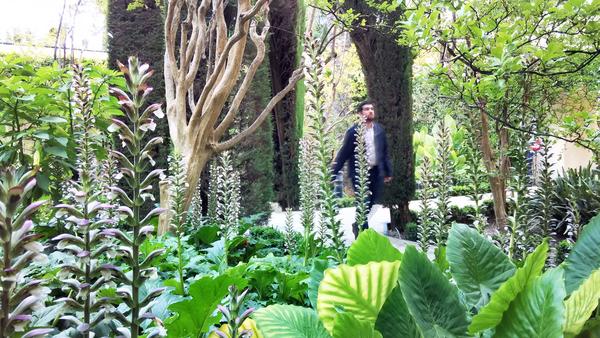El jardín de la Danza debe su nombre a la existencia de un sátiro y una ménade de plomo situados sobre dos columnas cercanas a los magnolios. Este se halla dividido longitudinalmente por un eje que comunica con el Jardín de Troya a un nivel inferior y con el estanque de Mercurio situado a un nivel superior y al que se accede a través de una escalera pétrea del s. XVII. Por otra parte, este se conecta transversalmente con el Cenador de Carlos I a través del jardín de las Damas y por otra, con la parte baja del antiguo jardín de Crucero; hoy conocido como los baños de María de Padilla en alusión a la amante del rey Don Pedro. Espacio donde se alían lo subterráneo y lo acuático, hospedando lo más arcano y esotérico del jardín. No por casualidad la fuente situada en el exterior se denomina fuente del Signo. Palmeras, daturas, árboles de júpiter, mirtos, acantos o cipreses, entre otros, forman la voluptuosa y exótica jardinería de este espacio, presidido por dos enormes magnolios plantados a mediados del s. XIX.
